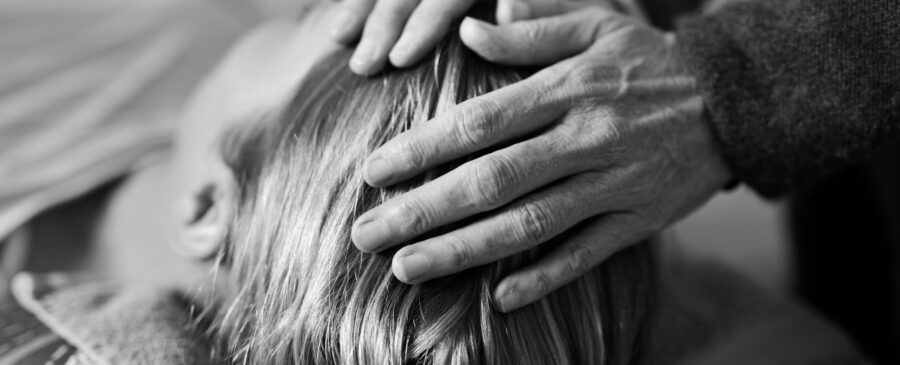A Touch of the Divine: What Medieval Beliefs Teach Us About Marketing

Beliefs are powerful.
Some run so deep that they fundamentally change the outcome of an entire life. Whether it be belief in soulmates, right and wrong, or a higher power, beliefs of any kind can shape who we are and even how our lives play out. It turns out, the same thing is true when it comes to our belief in brands. Much like having faith in a higher power, we can experience both mental and physiological experiences related to our belief in the power of brands to help us feel like — and even become — the best versions of ourselves.
This is the foundation of a psychological concept and marketing model that I call BRANDcebo, or the placebo effect of brands. It is backed by years of my academic research and tried and tested through decades of professional observation. So, let’s travel back in time to the middle ages to learn about what the beliefs of this time period can teach us about the power of marketing.
History
In 1042, King Edward the Confessor began his reign. He was the first of many royals to claim that their “Royal Touch” could cure diseases. That’s right, he claimed that by just laying his hand on one of his subjects he could actually heal ailments caused by horrifying diseases such as tuberculous cervical lymphadenitis, a disease that commonly presents with large masses or lesions on the neck. The king’s subjects would journey for days just to have the royal hand wave over or touch them. They would often be given small gold pieces at a later date, called angels, to touch as a means to strengthen the potency of the king’s cure.
Science
Modern science tells us that a simple touch of a hand couldn’t possibly cure a person of such serious conditions. But somehow, thousands upon thousands believed that it did, over the course of many kings and many generations. Still today, there is no scientific standard to explain exactly why the touch seemed to work. We must rely on the anecdotal reports from the doctors of the day that suggested the supposed cures somehow had a real and true positive effect on the ill subjects. According to these accounts, many people truly survived after the touch of the king. One of the surgeons that witnessed these acts even claimed that the king’s touch had cured more subjects in one year than all of the surgeons in the king’s three kingdoms since his majesty had come to power. To many of us these days, it seems like a stretch. So, how could this be possible?
Belief
While the success of the royal touch doesn’t bode well for the skill of the surgeons of that time, it does have something to say about what kinds of methods might have worked better in this era. Aside from bloodletting and bed rest, there was no other “cure” in the middle ages for the cruel diseases taking so many lives. The people were so desperate to believe in a cure that upon hearing of the success stories, they were absolutely convinced that the touch of their king would save their lives. They had heard of or witnessed so many that appeared cured from the king’s touch that they believed, without a doubt, that it would work for them too. Not only were they conditioned to expect that they would also experience a miracle, they held a fervent motivation to experience the cure as well.
Faith
This concept might sound a whole lot like faith. And that’s because it is. It’s the belief in a higher power — so integral to the most common religions in the world. Think back to what you know about religious stories. It is not magic but miracles that prove to people that their beliefs are true. Faith skips over the burden of scientific proof. Instead, it requires an unconditional belief. But what if the miracle itself doesn’t come from the hands of the king, but rather, the belief itself? What if the true power is in the subjects’ belief that the miracles are in fact real and true miracles?
Placebo
While the placebo effect was discovered at the very end of the 18th century, it is clear that it is actually a far more ancient concept. Our brains and bodies are wired to experience this effect and we have actually used it for thousands of years. While these miracles may very well have happened, the longstanding belief that they occurred shows us that the power of beliefs can actually manifest physically in the body. Perhaps the mind is far and away more powerful than many of us might anticipate today. In truth, scientific research shows us that the mind and body are deeply connected when it comes to our beliefs, desires, and expectations. While this concept of the placebo effect is most famously observed in the field of medicine, it also happens with our brand relationships too.
BRANDcebo
If we believe something works, or is the best possible solution, this certainty can change the way we experience the world, both physically and mentally. That is the placebo effect of brands, or as I coined it, BRANDcebo. Let’s walk through how this concept played out in the lives of the king’s subjects. The first element of BRANDcebo is priming, or tapping into the subconscious mind to condition a certain belief. This happened when the subjects heard the stories of the miracle of the royal touch and all of the lives he has saved. They were predisposed to believe the cure works. The next element is expectation. Because of that conditioning, the subjects expected that they too would be saved. The cure should work for them too, right? The final element is desire. Because the subjects wanted so deeply to be cured, they experienced not just an emotional reaction, such as hope, but a physical one too. Their deep belief that they would be cured elicited real, physiological changes in their body that impacted their health too.
Branding
As you can see, this model applies to our assessment of brand loyalty as well. One could argue that just like the best brand name of a medicine on the shelf in your pharmacy, the king had a brand too. His hands were the most sought after medicine in the land. This effect can, of course, be applied to modern brands too. When customers are primed to believe your product works, they become motivated for it to work. And if the belief is strong enough, their physiology can adapt so that they actually do perform better because of it.
This is just the beginning of the magic of BRANDcebo. Buy the book here to learn how to get the king’s touch for your brand.
